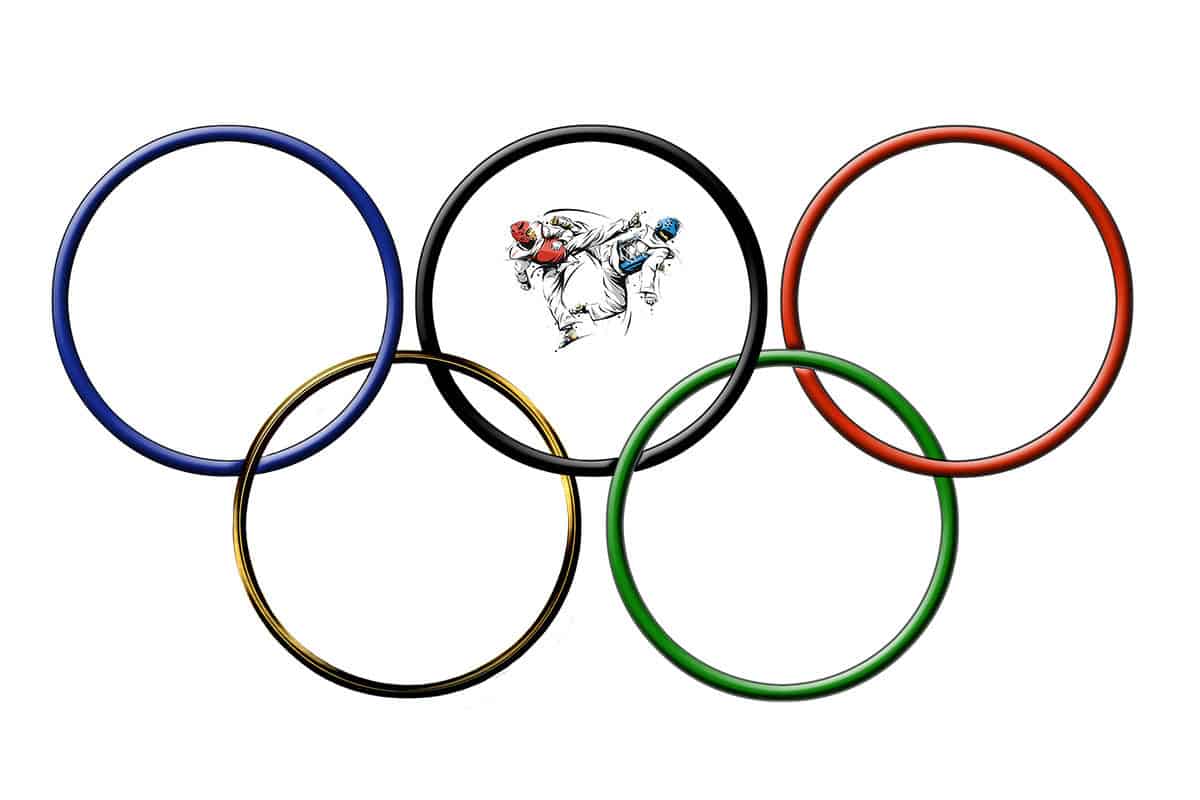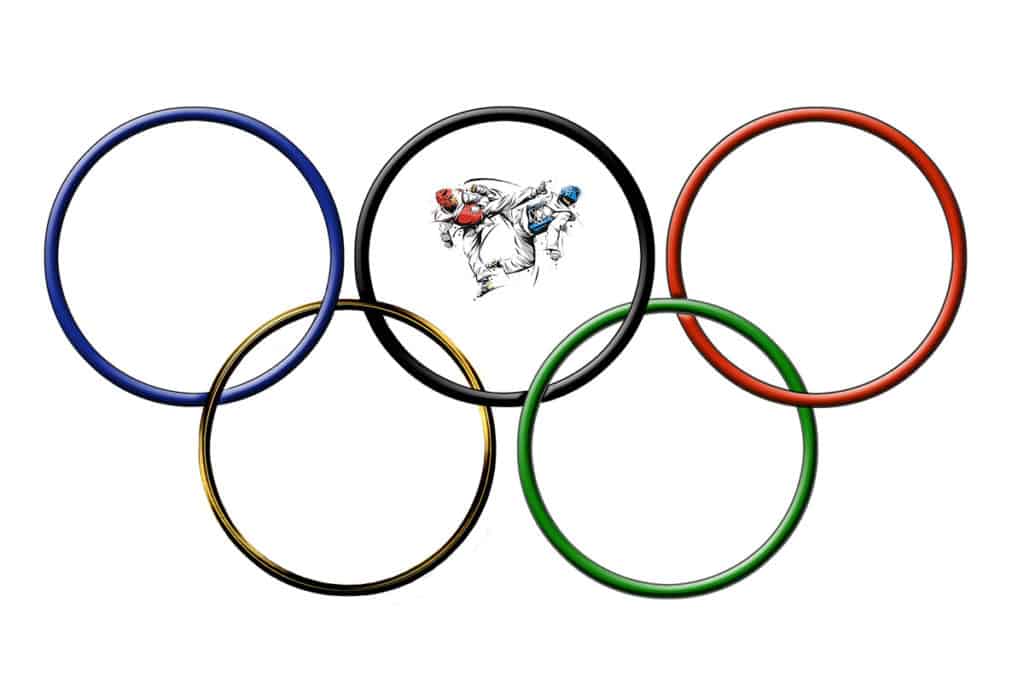
The art of TaeKwondo is still a fairly new martial that has only been around for less than a hundred years. But in the short time the martial art has been practiced it has had a meteoric rise in popularity. It is now practiced by millions across the world and had the honor of becoming an Olympic sport in 2000.
We’re going to breakdown how it became an Olympic sport as well as the rules and how one qualifies to compete in the event.
How did TaeKwondo become an Olympic Sport?
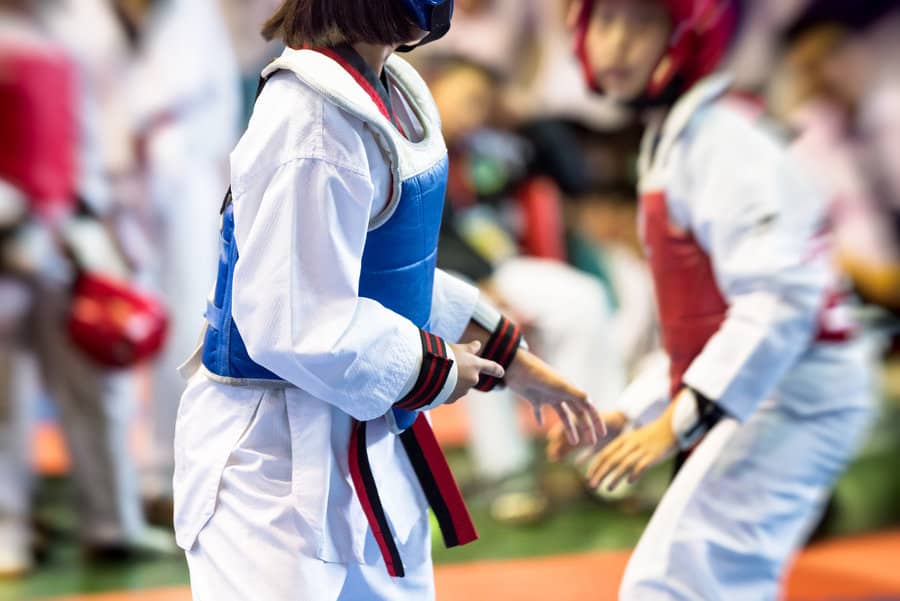
Before TaeKwondo could even think of becoming an Olympic sport, the martial art first had to be organized. The Korea TaeKwondo Association (KTA) was founded in 1959 and was established to attempt to unify all Korean martial arts. It was organized by South Korean General Choi Hong Hi.
(Side note: General Choi actually came up with the name TaeKwondo to refer to the unified style, which was originally referred to as Tae Soo Do.)
Unfortunately, General Choi wanted the other members to adopt his own style of TaeKwondo, but they did not agree. They wanted a unified style based on the input of all the members.
It wasn’t until 1972, the KTA and the Ministry of Culture, Sports, and Tourism of South Korea founded the Kukkiwon. This was the new national academy for TaeKwondo.
The Kukkiwon and KTA went along to form the World Taekwondo Federation(WTF) in 1973. In the same year the first international championship was held in Seoul.
(Side note: The WTF name was changed to World TaeKwondo in 2017 after confusion with the initialism.)
They began taking steps to become an Olympic event soon after. In 1974 TaeKwondo was admitted into the American Athletic Union(AAU). This group’s goal is to establish standards for various sports and adopted the standards of World Taekwondo.
In 1975, TaeKwondo became an affiliate of the General Association of International Sports Federation.(GAISF) This group works closely with the Olympics and promotes cooperation among international sports federations. Five years later TaeKwondo was recognized by the IOC.
After being a primary event of the World Games. TaeKwondo was then was given an official designation for an official demonstration sports at the 1988 Olympic Games in Seoul. Also, the 92 Olympics in Madrid, Spain.
Between the time of their official designation and the ‘92 games, the sport was added to multiple prominent international events.
During those events hundreds of TaeKwondo practitioners moved in unison performing the moves of the martial art.
Finally, TaeKwondo debuted as an official sport at the 2000 Olympic Games in Sydney, Australia. From that point on it has been an Olympic sport that hundreds of international athletes compete in every four years.
What Style of TaeKwondo is at the Olympics?
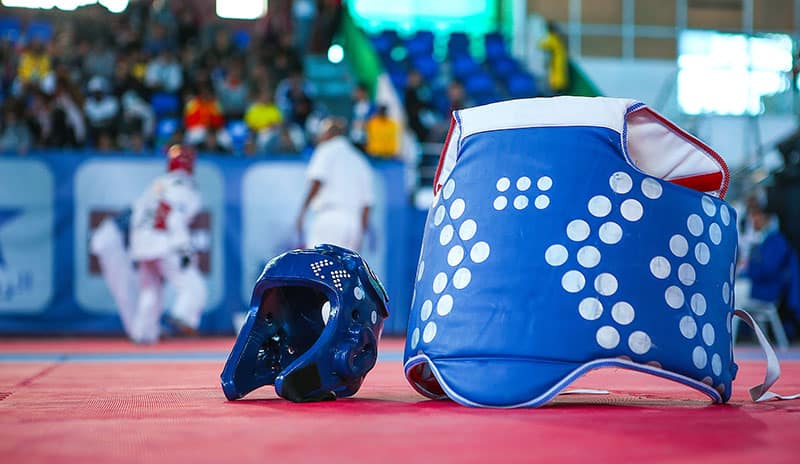
There are a few different types of TaeKwondo sparring with each having a different sets of rules. The two most popular being point sparring and full contact. Full contact sport TaeKwondo is the type of sparring done at the Olympic Games.
What is the Layout and Rules of an Olympic TaeKwondo Match?
The layout and rules for a match are as followed:
- The match consists of 3/2 minutes rounds with a one minute rest.
- The match is held on a mat with a length of 8-10 meters.
- The match is overseen by a referee and 3 judges.
- The 3 judges press a button when they see a point scored.
- You win a match by landing as many punches and kicks in the targeted areas.
- The designated areas are the midsection and the front and sides of the head.
- You either win by points, knocking out the opponent, or disqualification..
- Disqualification can be given after a severe penalty or multiple penalties.
- Kicks are allowed to the head and midsection.
- Punches are only allowed to the midsection.
- Punches must connect with force to be counted as a point.
- Kicks to the body also need to be forceful.
- Kicks to the head just need to touch to be awarded points for safety issues.
- No grabbing of the opponent’s equipment or kicks.
- No holding.
- No takedowns.
- No turning your back on your opponent or falling down.
- Replay can be implemented if the coach believes points were missed and protests.
- A competitor when knocked down is given a count of 10 to get up. They’re given a standing 8 count after getting up and checked if they’re okay to continue by the referee.
- If the match ends in a tie, there will be a sudden death round and the first point landed by a competitor wins.
What is the Taekwondo Scoring System at the Olympics?
- Punches to the body are awarded 1 point.
- Kicks to the body awarded one point, but more points are awarded if a spinning technique is executed.
- Kicks to the face are awarded 2 points with extra points added if a spinning technique is landed.
- Extra points are giving due to a knockdown.
What are the Penalties at an Olympic Taekwon Match?
Penalties can be given if a competitor does one of the following:
- Grabs or holds opponent
- Throws an opponent to the ground
- Pulling an opponent to the ground
- Pushing an opponent
- Takedowns
- Falling down
- Illegal punch to the opponent’s face
- Feigning injury
- Turning their back on an opponent
- Stepping out of bounds
A deduction of a point is called “Gam-jeom.” Multiple deductions can lead to a competitor’s disqualification.
What are the The Olympic TaeKwonDo Divisions?
The divisions are separated by sex and weight.
Men’s Divisions:
- under 58kg(128lbs)
- under 68kg(150lbs)
- under 80kg(151-176lbs)
- over 80kg(176lbs and up)
Women’s Divisions:
- under 49kg(108lbs)
- under 57kg(109-125lbs)
- under 67kg(147.7lbs)
- over 67kg(148lbs and up)
What Type of Equipment and Uniform is used?
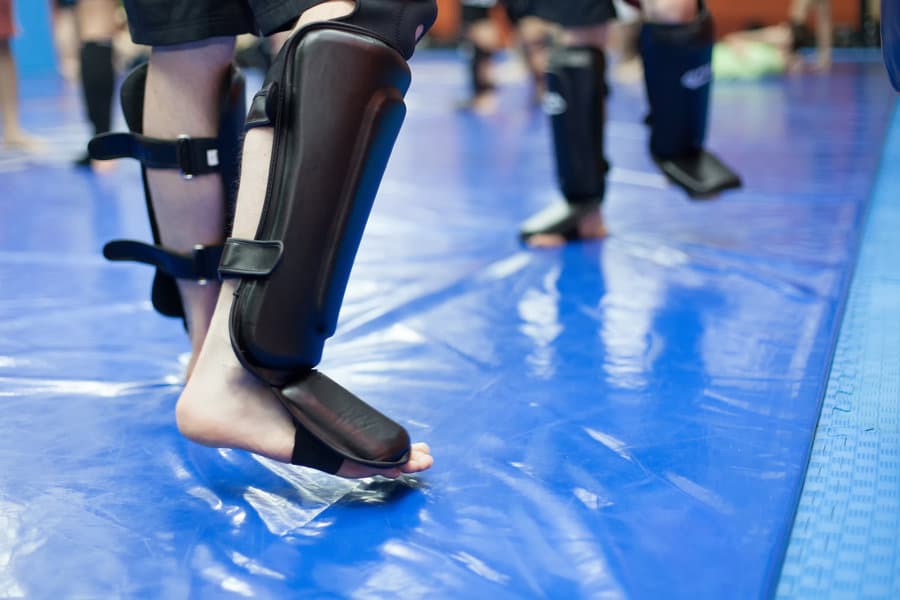
Here is a list of equipment and uniform worn by a competitor
- Gi uniform(kimono)
- Headgear
- Chest(trunk) protector
- Groin protector
- Mouthguard
- Shin protectors
- Foot protectors
- Forearm guards
- TaeKwondo sparring gloves
How the Taekwondo Tournament is Run?
The format of the Olympic tournament is a single elimination format. 128 competitors are separated into 8 divisions and compete within a 16 person bracket.
At the finals of the tournament, the two undefeated competitors fight for the gold medal. The loser receives the silver medal.
The bronze medal round called “the repechage” is contested between the two competitors that lost in the semi-finals.
Before 2011, the NOC restricted that a nation could only send a maximum of two male and female competitors. Regardless of the host nation. In the 2016 Olympics, this restriction was lifted by the NOC and nations may now qualify competitor for every weight class.
The host nation of the games are also awarded a certain number of competitors.
How to Qualify in Taekwondo for the Olympic Games
To be eligible to compete at the Olympics, a competitor must be a Kukkiwon certification holder and have a World TaeKwondo Global Athlete License.
To qualify for the Olympics, competitor must do one or more of the following qualifications.
- Be a medal winner of one the World TaeKwondo competitions in a 2 year span of the Olympic event.
- Be ranked within the top 20 athletes in the World TaeKwondo rankings 2 years prior to the Olympic event.
- Advanced to the quarter-finals of a continental tournament within two years of the Olympic event.
- Have won a national TaeKwondo championship within 2 years of the Olympic event.
A maximum of 1 competitor per weight division is granted to a nation by a NOC from the processes listed above. Nations can also qualify a maximum 8 competitors(4 male, 4 female) through a NOC.
That is a complete breakdown of Olympic TaeKwondo and how the tournaments are run. Sport TaeKwondo is an exciting sport and the Olympic tournaments are full of action and always exciting to watch.
The event takes place in the summer games every four years so be sure to check it out if you want to see an exciting martial art performed at its highest level.

